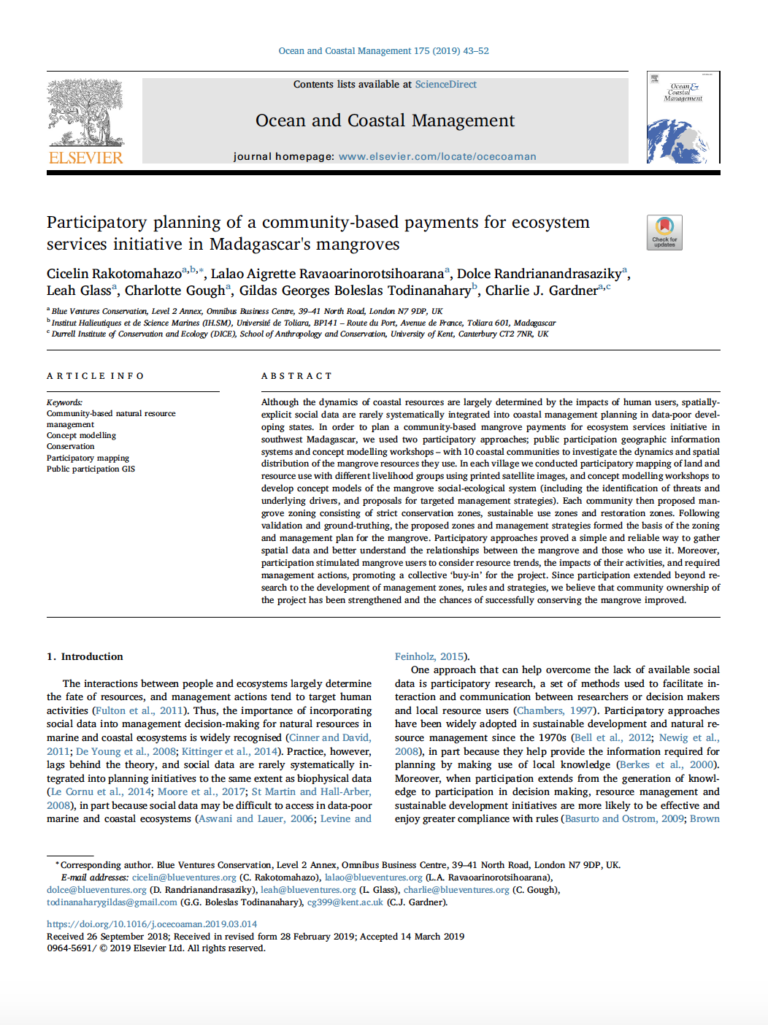Abstract
Although the dynamics of coastal resources are largely determined by the impacts of human users, spatially-explicit social data are rarely systematically integrated into coastal management planning in data-poor developing states. In order to plan a community-based mangrove payments for ecosystem services initiative in southwest Madagascar, we used two participatory approaches; public participation geographic information systems and concept modelling workshops – with 10 coastal communities to investigate the dynamics and spatial distribution of the mangrove resources they use. In each village we conducted participatory mapping of land and resource use with different livelihood groups using printed satellite images, and concept modelling workshops to develop concept models of the mangrove social-ecological system (including the identification of threats and underlying drivers, and proposals for targeted management strategies). Each community then proposed mangrove zoning consisting of strict conservation zones, sustainable use zones and restoration zones. Following validation and ground-truthing, the proposed zones and management strategies formed the basis of the zoning and management plan for the mangrove. Participatory approaches proved a simple and reliable way to gather spatial data and better understand the relationships between the mangrove and those who use it. Moreover, participation stimulated mangrove users to consider resource trends, the impacts of their activities, and required management actions, promoting a collective ‘buy-in’ for the project. Since participation extended beyond research to the development of management zones, rules and strategies, we believe that community ownership of the project has been strengthened and the chances of successfully conserving the mangrove improved.

















